Category: Archived
Idaho Army National Guard rescues injured hiker near Stanley
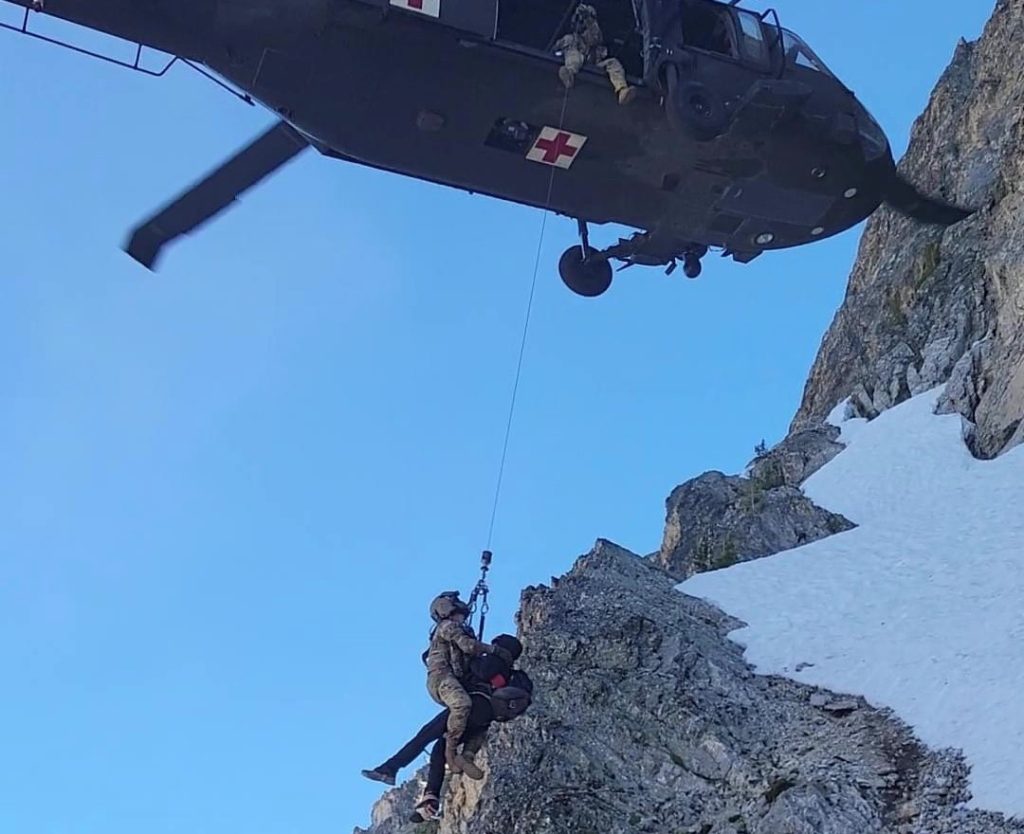
The Idaho Army National Guard’s State Aviation Group assisted Custer County Search and Rescue with the rescue of an injured hiker July 6 on Thompson Peak of the Sawtooth Range, outside of Stanley, Idaho.
The hiker, a 19-year-old male, suffered an ankle injury following a fall while rock-climbing near the mountain range’s highest peak, located approximately 75 miles outside of Boise.
“Our crew did an incredible job under some very challenging environmental conditions,” said Capt. Katherine Smith, commander of Det. 1, Company G 1st of the 168th Aviation Regiment. “The rescue required a great deal of crew coordination, as well as teamwork with the highly proficient extraction team from the Custer County Sheriff’s Office.”
The flight crew consisted of pilots Chief Warrant Officer 3 Theron Cameron and Chief Warrant Officer 3 Brennan Hoover; two crew chiefs, Sgt. Adam Brundy and hoist operator Sgt. Jessica Adamson; and one medic, Sgt. 1st Class Jared Gilstad.
The patient was initially located on a shear rock wall under a ledge. After locating him, crew members determined that there was no way to safely insert a hoist rider and extract him. The flight crew then flew to the Stanley Airport and picked up a five-person technical rope rescue team from Custer County’s search and rescue team.
“We were able to inert the team about 300 meters away from the patient using a two-wheel landing,” said Chief Warrant Officer 3 Theron Cameron, an Idaho Army National Guard UH-60 pilot.
The rescue team roped to the patient and relocated him to more favorable recovery site, where Adamson was able to lower Gilstad safely onto the ground near him. Gilstad quickly secured the patient and Adamson hoisted the pair back into the aircraft while the pilots kept the aircraft stable in challenging conditions.
“Due to the reduced power margins caused by altitude of more than 10,300 feet, the uneven terrain and the location of the extraction site, the aircrew was forced to pay extremely close attention to the aircraft limitations,” said Smith. “Lack of situational awareness in these types of situations could lead to a loss of lift or even rotor drop, requiring the aircrew to have to execute an emergency procedure to maintain stable flight.”
The flight crew transported the patient to the Stanley Airport, where he was transferred to civilian medical care.
Female armor officers prepare to lead Idaho Soldiers into combat

BOISE, ID, UNITED STATES
02.19.2019
Story by Capt. Robert Taylor
The 116th Cavalry Brigade Combat Team’s B Company, 2-116th Cavalry Regiment conducted gunnery Feb. 8-15 at the Orchard Combat Training Center, marking the first time female armor officers qualified in the M1A2 Abrams main battle tank in the Idaho Army National Guard’s history.
2nd Lt. Brooke Berard and 2nd Lt. Lauren Bolt graduated from the U.S. Army’s Armor Basic Officer Leaders Course Feb. 1 before returning to Idaho and accompanying their company to the field to conduct gunnery.
“After seeing the Abrams tank, I didn’t feel like I had another option,” Berard said. “Once I saw the tank’s power, that’s all I wanted to do.”
Both lieutenants will serve as platoon leaders for B Company, which is located in Nampa. As platoon leaders, each Soldier will command a platoon of up to 14 Soldiers and four Abrams.
Berard and Bolt are the first qualified combat arms female officers in the Idaho Army National Guard’s history. They follow other Idaho Army National Guard female Soldiers into the combat ranks since females were permitted to serve in all positions in the military in December 2015.
In 2016, 1st Sgt. Erin Smith became the first enlisted Soldier in the U.S. Army to graduate from the service’s M1 Armor Crewman School. In 2017, Staff Sgt. Kylene Huetra became the first female assigned to the 2-116th Cavalry Regiment as a tank crew member. She was recently reassigned as B Company’s supply sergeant.
Sgt. 1st Class Melanie Galletti graduated from the Infantry Transition Course in April 2017, becoming the first female Soldier in the state’s history to earn the Army’s blue infantry cord. She served as a squad leader in C Company, 2-116th Cavalry Regiment until she was reassigned to a position in a different company and subsequently promoted.
“I don’t care if you’re male or female,” said Lt. Col. Jason Gracida, commander, 2-116th CAV REG. “I care if you’re a good leader and Soldier. At the end of the day, you’re going to lead Soldiers into combat. I need to know if you’re a capable officer.”
Both junior officers know and understand their role on the battlefield.
“We close with and destroy the enemy with shock, mobility and firepower,” said Berard. “Not only do you have this firepower, you also have to make choices quickly.”
The M1A2 Abrams main battle tank is the Army’s most advance battle tank.
“When we get together and put rounds down range, and begin to maneuver as an element, there’s nothing more exhilarating,” Bolt said.
Bolt served as an 88M motor transport operator with the Nevada Army National Guard before transferring to the Idaho Army National Guard to become an armor officer. Both her parents also served in the military.
Gunnery tables often mean long days, with mechanical issues and winter weather causing delays, adding to the stress for new lieutenants conducting gunnery for the first time.
“Sometimes it doesn’t feel like work,” Beard said. “You’re tired but it’s so much fun.”
Back to Newsroom
JOIN the Idaho Army National Guard
Viva Las Vegas – The 124th Fighter Wing Arrives at Green Flag-West

LAS VEGAS, NV, UNITED STATES
06.02.2019
Story by Master Sgt. Joshua Allmaras
More than 190 Airmen from the 124th Fighter Wing, Boise, Idaho and 12 A-10 Thunderbolt II aircraft from the 190th Fighter Squadron arrived at Nellis Air Force Base, Nevada, May 30, 2019.
The aircraft and Airmen are participating in Green Flag-West 19-8, a realistic air-land integration combat training exercise. This exercise will heavily support the Idaho Army National Guard’s 116th Cavalry Brigade Combat Team, who are training at the Fort Irwin National Training Center in California in preparation for an overseas deployment.
“This training is invaluable to our pilots, maintenance and support Airmen,” said Col. Shannon Smith, the 124th Fighter Wing commander. “It allows us the opportunity to hone our close air support skills, validate joint interoperability and achieve combat readiness.”
Not only is this training valuable to the wing, but it directly supports our fellow guardsmen.
“We not only will be enhancing our combat lethality, but we will directly be supporting our fellow guardsmen in the Idaho Army National Guard during our Green Flag rotation,” said Smith. “Nothing hits home more than knowing you are directly supporting your fellow brothers and sisters from the Idaho National Guard.”
Out of the 3,000 soldiers that comprise the 116th CBCT, more than 1,800 are from 137 Idaho communities. The training is key to the success of the soldiers.
“The national training center provides some of the most realistic training the Army has to offer,” said Col. Scott Sheridian, the 116th CBCT commander. “This gives us the opportunity to exercise our warfighting functions in a way we can’t anywhere else.”
This Army deployment is the largest in the 116th CBCTs history, but that’s not the only first.
“From what I understand, this is the first time that both an air and land component from the same state have supported each other in both the Green Flag and NTC training environment,” said Smith. “This is one of those unique opportunities to directly and positively impact the overall combat readiness of the entire Idaho National Guard.”
Col. Smith takes command of the 124th FW
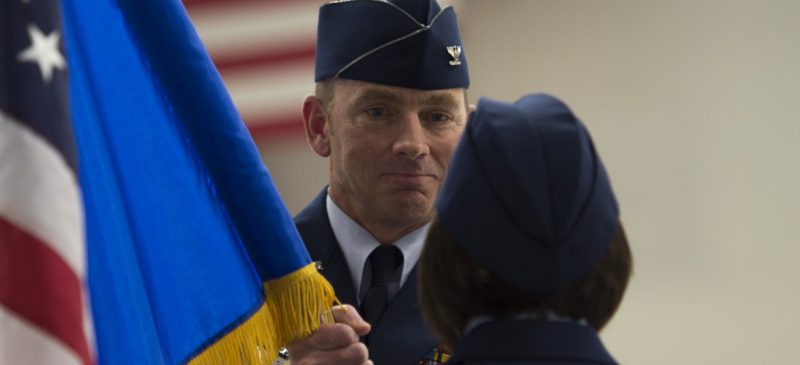
05.05.2019
Story by Capt. Rebecca Solosabal
A new commander took lead of the Idaho Air National Guard’s 124th Fighter Wing during a change of command ceremony May 5, 2019, at Gowen Field, Boise, Idaho. Col. Shannon Smith accepted accountability of the wing in front of guardsmen, community leaders, family and friends.
“I am truly humbled and honored to stand here before you today, and I thank you for sharing in this moment,” said Smith, as he addressed Airmen as their new commander. “Your presence here today is witness to the service and sacrifice of our Idaho guardsmen and their families.”
Smith assumed command of the 124th FW from Col. Tim Donnellan, who had led the wing since 2015 and has been selected to serve as the Idaho ANG chief of staff within the Idaho Military Division.
Brig. Gen. Michael Nolan, assistant adjutant general–air, Idaho Air National Guard, presided over the ceremony and, with the guidon, symbolically passed leadership responsibility of the wing from Donnellan to Smith.
“Col. Donnellan, my hat’s off to you; you are a man of action and your words count,” said Smith. “My sincere gratitude for your service and your devotion to our mission and our Airmen, and I commit to uphold the standard you have so vividly set.”
With 27 years of military service, 17 of which were in Idaho, Smith comes with an abundance of command experience. Prior to his current role, Smith served as the 124th Operations Group commander, and before that as the 124th Maintenance Group commander. He also previously deployed to Operation ENDURING FREEDOM as deputy commander, 455th Expeditionary Operations Group, 455th Air Expeditionary Wing, Bagram Air Base, Afghanistan.
“Airmen of the 124th Fighter Wing, as you well know, we are always on mission,” said Smith. “This fighter wing is at the tip of the spear, and that is exactly where we belong.”
Both commanders touted the readiness and accomplishments of the wing. Donnellan highlighted the “heroic” effort of the wing’s Airmen over the last four years as they executed the largest deployment in IDANG history and strengthened community ties at home. Smith reminded the wing of Airmen who are currently deployed in various theaters throughout the world, and that readiness, partnerships and innovation would be essential to future operations already on the horizon.
As he addressed his new wing, Smith emphasized the uniqueness and importance of the Guard members as citizen Airmen. Smith said, “We are who we are by design, and we will not apologize for that. Our nation needs the Guard now more than ever.”
“I would choose no other team, at no other time than here today with you,” he said. “Go Guard! Attack!”
You Got Your Go – ASOS Ranger Graduate

04.30.2019
Story by Master Sgt. Joshua Allmaras
“I think I didn’t get it,” said Master Sgt. Douglas Brock, a tactical air control party craftsman assigned to the 124th Air Support Operations Squadron in Boise, Idaho. “I didn’t get my look and this is going to have to happen all over again. I’m going to recycle.”
Brock was almost to the end of his journey to become the first graduate of ranger training in 124th ASOS history. Although there have been prior service ranger-tab-wearers in the squadron, no one has graduated directly from the unit until now.
The road to this moment for Brock wasn’t a typical one. He hadn’t thought much about ranger school, but when a fellow Airman asked if Brock wanted to put in for it, he agreed. To their surprise, they were both accepted in early 2018.
“Another Airman in my unit did the legwork and got us seats and I give him all the credit for opening this door for me,” said Brock.
Unfortunately due to a government shutdown, Brock’s seat at the school was cancelled, but his interest in becoming a ranger didn’t fade from his mind.
“I went to the NCO Academy and that’s where I thought, ‘I need to do this,’” said Brock.
He got everything lined up and ended up securing another seat. Soon, Brock departed out of Boise for Fort Benning, Georgia, home of the ranger pre-qualification courses.
“I was very anxious,” said Brock. “There were a lot of nerves and I didn’t know what to expect. I was also very excited to the point that I wasn’t eating.”
Although Brock didn’t know what to expect, when he arrived in Columbus, Georgia he quickly found out he wasn’t alone.
“We all had two to three large green duffle bags and we all had shaved heads,” said Brock. “I began to piece together that we all were going to the same place.”
In order to qualify for ranger school, hopefuls must complete a pre-ranger course. Brock chose to attend the Army’s Ranger Testing and Assessment Course where he hoped to blend in.
“I get to RTAC and there’s 120 of us who show up in PT gear,” said Brock. “I’m the only one in Air Force PT gear.”
Everyone had questions about the Air Force guy, but it didn’t faze him.
“I had all this pressure of being the oldest guy and the Air Force guy, but really everyone’s on the same playing field,” said Brock.
The two-week course was over before he knew it and Brock was ready to attempt to move forward to ranger school.
“There’s no guarantee you’ll get a slot in ranger school after RTAC,” said Brock. “I walked over to ranger school and stood in formation for hours and finally got selected to stay.”
The initial course candidates were separated into three companies, each of which complete three phases of schooling. The first phase focused on individual performance.
“The first phase is pretty cutthroat,” said Brock. “The first week is the ranger assessment phase and it’s all individual-based training. It’s not easy and I thought to myself, ‘what did I just get involved with.’”
Being the outsider wasn’t easy.
“It was a pretty painful process for me during the first three weeks,” Brock said. “I asked a lot of questions because I didn’t know the Army lingo. There was a lieutenant who took me under his wing and helped me all the way to graduation. This was the perfect example of how the Army and Air can work together.”
Ranger school isn’t easy, but there was one thing that was particularly tough for Brock.
“Motivation was the hardest part,” he said. “Despite the fact that you are completely worked over, you have no food in your system, you haven’t slept in I don’t know how many hours and you still need to operate. You still need to function. You have to find a way to not only motivate yourself, but also the rest of the guys in the company to stay focused and get the job done.”
The rigors of the course took a toll on every company member. It was more than camping and playing in the dirt with the Army.
“Every phase you have an evaluation and you get two looks during each phase,” said Brock. “You have to pass one of them to move on.”
Through the exhaustion, hunger and increased pressures of the course, one memory stood out for Brock.
“I got my first assessment in the third phase and failed it,” he said. “We were on a 10-day field training exercise and I finally got my second look on day eight. They don’t tell you right away if you pass. They wait an entire day.”
The waiting wasn’t easy. What made it more difficult was watching two of his fellow teammates receive bad news.
“Both of these guys got an hour debrief and I can see what’s going on and they are getting berated,” said Brock. “I’m thinking about it and stressing. I can feel the tears in my eyes.”
The other guys were finally done and Brock couldn’t wait any longer. Eager to hear his fate, he approached the ranger instructor.
”Let’s cut to it, did I pass?” asked Brock.
The instructor was shocked, but put his hand out to shake Brock’s and said, “You got your go.”
That simple statement from his instructor gave Brock immense relief. This moment and more motivated him during the 62-day course.
“Every day I was struggling and it was hard to put one foot in front of the other,” said Brock. “I kept thinking about April 5 and being at Victory Pond with my dad putting the tab on.”
Brock graduated as the course’s enlisted honor graduate April 5, 2019 as the first ranger to be qualified directly from the 124th ASOS.
His father pinned his tab on and his goal to become a ranger was complete. His experience culminated in words of wisdom for his fellow Airmen.
“If you truly want something bad enough, there’s truly nothing that can get in your way and stop you,” said Brock. “If you want to go do something, establish a program or plan and then make it happen. There’s no excuses. You can do it.”
ACC Commander visits IDANG
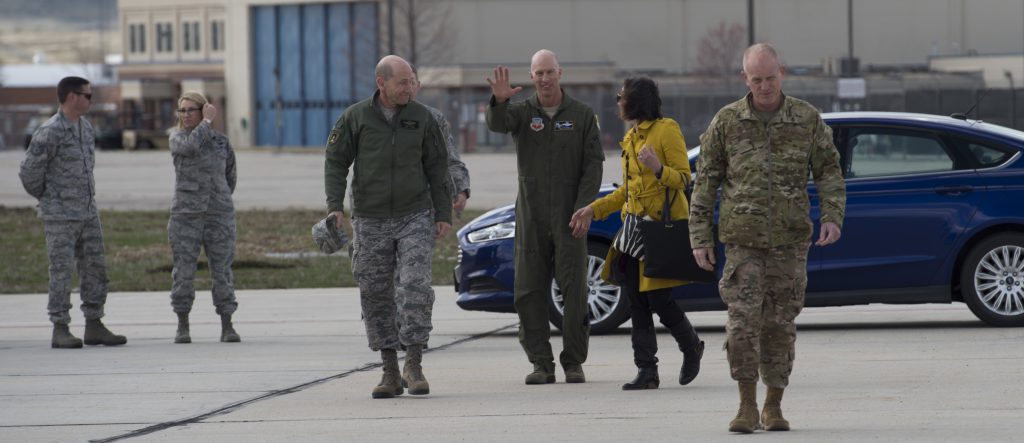
BOISE, ID, UNITED STATES
03.28.2019
Story by Airman 1st Class Mercedee Wilds
124th Fighter Wing
Gen. Mike Holmes, commander of Air Combat Command, visited Airmen from the Idaho Air National Guard while on a tour of multiple installations, March 28, 2019, at Gowen Field in Boise, Idaho.
Holmes said the focus of the Air National Guard aligns with his primary goals, which include revitalizing squadron readiness, developing leaders and reaching the future faster. In addition to revitalizing weapons systems, increasing the readiness of Airmen and their families is Holmes’ top priority.
When it comes to selecting leaders, Holmes looks for individuals who are ready to win in a joint mission environment, which is an area the Guard excels in.
“There is an environment in the ANG that gives Airmen the opportunity to learn, develop and take on leadership,” said Holmes.
He said a leader is someone who can guide the team they’ve been given and accomplish their mission within their resources and with the Air Force’s core values top of mind.
“The ANG does a great job of preparing and presenting leaders,” said Holmes.
Holmes said he is focusing on removing red tape and delays that stop the total force from modernizing. “My wish for everybody in the Air Force and ANGis that they find a life that gives them meaning and purpose,” said Holmes. “I hope that the time they spend wearing the uniform contributes to that.”
Back to Newsroom
Join the Idaho Air National Guard
Missing in Idaho – A lost hiker training scenario
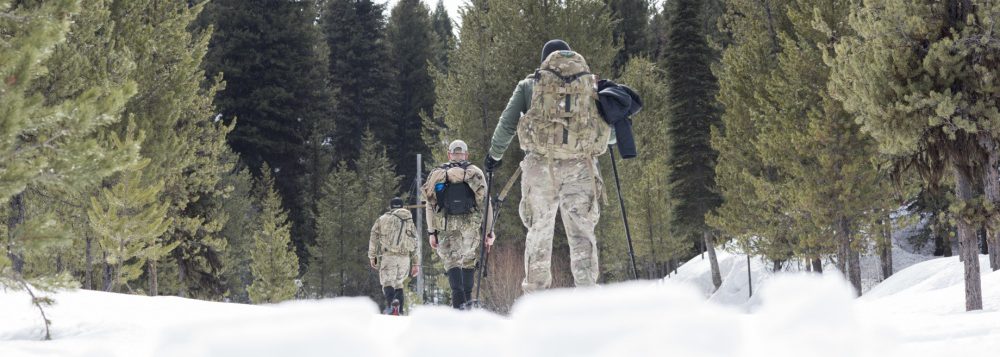
BOISE AIR TERMINAL AIR GUARD STATION, ID, UNITED STATES
03.13.2019
Story by Master Sgt. Becky Vanshur
124th Fighter Wing
CASCADE, Idaho – Imagine there is a missing hiker in the snow-covered mountains. The Idaho Air National Guard’s 124th Air Support Operations Squadron is called for assistance with local northern Idaho search and rescue teams. This is the second year of this specific training with state authorities for possible rescue missions involving the IDANG here on March 7-9, 2019.
Friday, March 7 at 11:32 a.m.
The call comes in. Idaho Emergency Dispatchers notify the Air Force Rescue Coordination Center, the single agency responsible for coordinating federal search and rescue activities, with a request deemed necessary for military assistance. A missing hiker is reported to possibly be lost in the mountains near Horse Thief Reservoir. The hiker was due home by 11:00 p.m. that previous night and all communication was lost as of 8:00 p.m., Thursday evening, three hours earlier. The incident was reported the following morning.
Time is of the essence.
It is just minutes past noon. The Airmen from the 124th ASOS’s Tactical Air Control Party have gathered their response team and their equipment. A convoy of their vehicles leave the gates of Gowen Field to begin the two hour drive north to assist with the search mission.
2:00 p.m.
With the weather calm and clear, a surveillance search and rescue aircraft has been called and is circling the area with specialized thermal imaging systems, equipped with GPS and laser rangefinder to enable precise geolocation.
A large parking lot near Horse Thief Reservoir quickly becomes the search and rescue incident response center. The Idaho TACPs have set up their communications vehicle with an elevated antenna mast for air-to-ground and ground-to-ground radio communications. A TACP makes contact with the aircraft. “The missing person is a 48-year-old male wearing a gray sweatshirt. Last known whereabouts were hiking in the hills south of Horse Thief Reservoir roughly 18 hours ago.”
The Valley County Search and Rescue’s team leader describes the area he wants searched. The air controller wastes no time translating to the aircraft. “Condor, this is Vandal. At grid November-Kilo-271356 you should see a hilltop, with a 30 meter clearing, no trees. From this hilltop, perform a circular search pattern in a 500-meter radius, working outward.”
The aircraft is equipped with a specialized system, Remotely Operated Video Enhancer Receiver (ROVER), which transmits the digital video feed down to the TACP’s tablet. The aircraft will switch between a television camera picture and thermal infrared radiation picture, which detects longer wavelengths of thermal energy invisible to the human eye. Condor’s search is on, while the ground teams watch the video and further direct the camera.
3:07 p.m.
The ROVER video has found a thermal spot similar to that of a person’s size. The aircraft calls it in. “I have a heat signature under some trees, no movement, possible shape and size of a person.” A precise grid location immediately follows and the radio chatter between ground stations begins.
Already standing by, the initial search team heads out. Two individuals from Valley County Search and Rescue, and two from the 124th ASOS use snowmobiles and tracked all-terrain vehicles to make their way up the mountain. The TACPs utilize GPS receivers with paper and digital maps essential for navigating this mountainous terrain.
3:40 p.m.
Team 2 remains at the Horse Thief Reservoir incident response center, anticipating possible extraction scenarios and preparing appropriate equipment. Communication continues back and forth between the aircraft, the incident response cell and the initial search team. The initial search team is close, but the terrain has required them to proceed on foot down a near-vertical cliff face. Minutes continue to pass, hands clenching tightly to the radios.
3:49 p.m.
The initial search team has located the missing hiker, and team 2 is mobilized over the radio. “Copy. The individual has been found. One male, gray sweatshirt, around 48-years-old and is unresponsive, could have a possible head injury. Requesting team 2 for extraction, bring the hoist stretcher, SKED and ropes systems. Bring medical assistance.” The initial search team is accessing the individual but has requested the additional medic.
Every minute counts.
Team 2 sets out on foot. Valley County Search and Rescue’s search dog is sniffing the ground and air, determined. The snowshoes of two ski patrollers and the team of six TACPs trekking at a very fast pace, hauling the requested equipment and making their way straight to the location of the initial search team. They continue off road, hiking straight up steep terrain, cutting valuable minutes off the clock.
4:00 p.m.
Team 2 arrives, the medic assesses the patient while the TACPs locate a suitable helicopter landing zone. He needs immediate medical assistance at the nearest hospital. The request for a rescue helicopter is made. The two teams, working quickly together to load and strap the patient to a backboard-SKED combination, while others build a pulley system used to haul the patient up a 25-foot cliff face to an open patch of ground suitable for a landing zone. The extra military manpower has saved precious time. The patient is handed off to the rescue snowmobile team, heading toward the landing zone for Life Flight Network assistance.
In this scenario, the local Life Flight helicopter would respond, but if a special extraction hoist is necessary for extreme terrain, the Idaho Army National Guard’s UH-72 Lakota Rescue Helicopter could be called and ready to respond within hours to transport a patient.
4:27 p.m.
With the help of the Idaho Air National Guard’s 124th ASOS, in this training scenario, the lost hiker was successfully found, rescued and a life was saved.
Local civilian search and rescue teams present for this joint training included Valley County Search and Rescue, Cascade Fire Department, McCall Fire Department, Tamarack Ski Patrol and Bogus Basin Ski Patrol.
The Traditional: A Pile of hope for Idaho’s youth
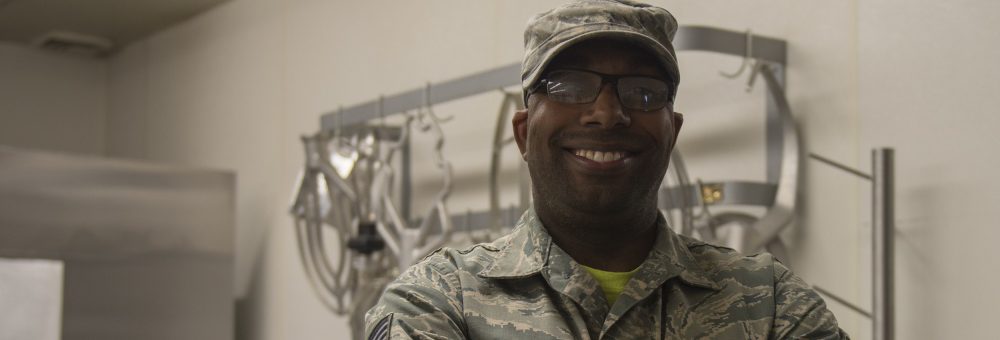
BOISE, ID, UNITED STATES
11.02.2018
Story by Airman 1st Class Taylor Walker
124th Fighter Wing
It’s Saturday. Airmen pack themselves along a wall outside the base cafeteria as they exhaustedly shuffle along toward a dry erase board. Eyes scan the board and land on colored letters that read JALAPEÑO POPPERS. The closest Airman quietly celebrates.
“Drill can be tedious,” said Tech. Sgt. Mario A. Pile. “If people can have at least one good meal, then people are happy. That’s the biggest thing for me; I get to be part of that bright spot on a tedious drill weekend.”
Pile, the NCO in charge of the 124th Force Support Squadron Services Flight, dedicates his time to creating welcoming environments for people around him because he believes in building bridges between colleagues and those in need.
“Even as a traditional guardsman, he spends time communicating with the people he supervises outside of drill weekend, checking in on them and seeing how they’re doing,” said Senior Master Sgt. Amethyst R. Keaten, the 124th FSS base services superintendent. “That’s the guy you want on your team.”
Pile’s people-oriented disposition doesn’t stop with his role in the Idaho Air National Guard. As the full-time program manager for the Idaho Youth Ranch Hays House, Pile is responsible for overseeing a homeless shelter for youth ages 9-18.
“I manage chaos,” said Pile. “Everything that might go on with a kid, from school to therapy to casework to listening to them cry, I manage all of that.”
When it comes to a high-stress environment and the welfare of others, Keaten said Pile’s multifaceted approach to problems elevates his success in both his military and civilian careers.
“He’s able to take a situation and look at in a multitude of ways versus just one way,” said Keaten. “He does that with a lot of willingness and ability to empathize and put himself in another person’s shoes. That level of thoughtfulness and care helps him to be very well-suited for what he does at the Hays House and what he does (in the Air National Guard).”
Hays House provides a home to nearly 100 kids each year and is the valley’s only shelter for runaways and homeless kids who are victims of abuse or neglect. To parents who have a hard enough time managing the schedules and development of their own children, Pile’s dedication to Idaho’s homeless kids seems like the work of a superhero. Although fans like Keaten say he shines on a regular basis, Pile disagrees.
“I don’t do anything unique or super special,” said Pile. “I listen and I try to smile and greet the kids. It’s a lot of the small things.”
Pile, who has also worked for the Idaho Youth ChalleNGe Academy, said he’s driven by the opportunity to influence how youth in Idaho are treated. While Hays House provides food, shelter and important resources 24 hours a day, he emphasizes that the best way for anyone to help a kid is by taking the time to mentor them. The key, Pile said, is to slow down and truly listen to and understand what they have to say.
“Just because a kid is labeled as at-risk doesn’t mean they’re a bad kid,” said Pile. “If every adult could see that an at-risk youth is not a bad kid, maybe we’d show more empathy. We need more empathy. Not more efficiency. Not more doing things quickly. We need more empathy.”
IDNG quake response exercise flexes multiagency response muscle

BOISE, ID, UNITED STATES
03.19.2019
Story by Master Sgt. Sarah Pokorney
Joint Force Headquarters, Idaho National Guard
A team of personnel from the Washington National Guard’s 10th Homeland Response Force, dressed in tan protective suits enters a partially collapsed building in search of possible survivors. The damage to the building and potential deadly argon gas contamination is the result of a catastrophic earthquake and jolting aftershocks affecting southern Idaho. Across town, in a dark, cramped room deep within the Lucky Peak Dam, Guardsmen of the Idaho 101st Civil Support Team assemble a rescue tripod over a dark utility hole to rescue workers trapped hundreds of feet below.
These are just a few of the hundreds of disaster scenarios that played out over the week-long Idaho National Guard disaster response exercise, Idaho Response-19, that took place March 7 to 13 in Boise, Idaho.
More than 350 Guardsmen took part in the exercise. Nearly 80 were Idaho Army National Guard Soldiers and Idaho Air National Guard Airmen, including the 101st Civil Support Team, Joint Staff assigned to Idaho’s Joint Operations Center, white cell planners, observers and personnel orchestrating Joint Reception, Staging, Onward Movement, and Integration, or JRSOI, for inbound organizations. Nearly 250 participants came from surrounding states including Guardsmen from the Washington’s 10th HRF, Montana National Guard’s 83rd CST, and Utah National Guard’s 85th CST. Representatives from U.S. Northern Command and the National Guard Bureau joined the Joint Taskforce Idaho staff.
The purpose of the Idaho Response-19 exercise was to test the Idaho National Guard’s ability to interact with regional partners and support civil authorities and agencies during a no-notice, catastrophic disaster. The scenario was designed to overwhelm an otherwise prepared state.
“When we started planning in early 2017, we envisioned an exercise of such magnitude that it would drive objectives we’ve never performed in a domestic response before,” said Col. Doug Smith, exercise director. “It would include seeking National Guard capabilities outside of the state like the 10th Homeland Response Force and civil support teams, require us to JRSOI incoming resources and stand up a dual-status commander to receive Title 10 forces.”
“I didn’t want to make too many factors notional, so we could really go through the motions as we would in a real response. The joint staff came in piecemeal as they would in a real incident—because they would be victims too,” said Smith. “The staff struggled at first but exceeded my expectations as they tracked both simulated and notional activities.”
The exercise was engineered to challenge the participants in a variety of ways. Day one started with a high volume of incidents overwhelming local first responders and testing participants’ communication skills and established processes. Day two brought fewer but more complex scenarios, which required more specialized response capabilities and taxed decision-making and prioritization skills. As the exercise progressed, the highly complex situations required focused working groups and multi-agency collaboration. The exercise culminated with a significant infusion of notional federal resources, which brought the exercise to a timely end.
“Some of the biggest lessons learned included our coordination with the Idaho Office of Emergency Management and how to support them as well as the process that the joint staff developed to effectively respond to situations as they rolled in,” said Col. Ryan Robinson, exercise chief of joint staff.
Robinson explained that the 18 months of preparation for the exercise included quarterly joint staff training, practical exercises, sending observers to Vigilant Guard exercises in other states and a visit to U.S. Northern Command at Peterson Air Force Base, Colorado.
Smith noted that the Idaho National Guard plans to hold another similar exercise in 2022 that will align with the Washington and Oregon Vigilant Guard Exercises, NORTHCOM’s Ardent Sentry and FEMA’s Cascadia Rising, which are based on a scenario following an earthquake and tsunami in the highly probable Cascadia Subduction Zone. Dubbed “The Big One,” this widespread incident is predicted to unleash a 9.0+ magnitude earthquake and a 100 foot-tall tsunami affecting the bulk of the Pacific coast shoreline and western states.
Smith went on to explain that key to maintaining our preparedness is by keeping leadership and the joint staff engaged while continuing to refine the planning and training. “The joint staff needs to stay engaged, which can be challenging as an additional duty, but we’re on a good path.”
The exercise followed the Idaho Office of Emergency’s Management’s three-day exercise, Operation Shared Response, which focused on the same scenario the week before. That exercise included local, state and federal responders. Both exercises ensure that the Idaho Military Division remains capable to respond during a real-world emergency or disaster.
Nearly a third of Middleton Police Department police officers serve in Idaho Army National Guard
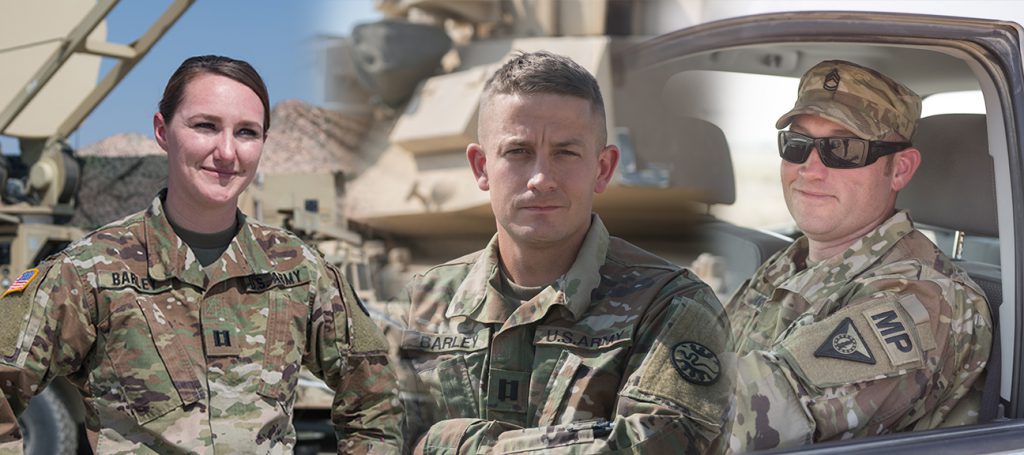
Story by Capt. Robert Taylor
Idaho Army National Guard
Capt. Haily Barley sees a lot of similarities between her job as a police officer for the Middleton Police Department and her service to the Idaho Army National Guard.
“I’m pushed to my limits, both physically and mentally, at both jobs,” she said. “But the best part is the people. You’ll never meet more amazing people dedicated to helping or serving.”
Barley should know about the type of people who do both. Out of the eight officers in the Middleton Police Department, three are members of the Idaho Army National Guard.
“I’m pretty proud to have those guys on our police department,” said Alan Takeuchi, chief of the Middleton Police Department. “Not only are they serving their community in their civilian jobs, we also have guys serving their country. We couldn’t ask for better officers at our police department.”
Barley, one of the department’s two school resource officers, is a signal officer with the 116th Cavalry Brigade Combat Team’s 116th Brigade Engineer Battalion. Capt. Mike Barley, is the 2-116th Combined Arms Battalion’s personnel officer and serves the department as a team lead and field training officer. The two were married in 2010 and hired by the department together in 2016.
Sgt. First Class Nathan Hilkey has similar jobs in both organizations. He’s a police officer and is assigned to the Installation Support Unit’s military police section.
“A lot of what Guard Soldiers possess are the same qualities we look for in police officers,” Takeuchi said. “I think the two go hand-in-hand with each other.”
Specifically, Takeuchi values the experience, confidence and leadership skills his Soldiers bring to his police force. He knows those qualities aren’t developed in police officers overnight.
The department was established in 2014 with a part-time police chief and three officers. Today its staff consist of eight fulltime officers, one clerk and a part-time clerk. Takeuchi expects the department to continue to grow with the town’s population. As it does, his Soldiers’ leaderships skills will be useful as the department grows to include captain and lieutenant positions.
In the meantime, Mike Barley said he enjoys being able to do a little bit of everything in the department without formal divisions and sections. He initially decided to become a police officer in 2011 because he needed a job before attending medical school. He said he liked being a cop so much he decided to forego becoming a doctor, even after being accepted into medical school.
Hilkey was one of the officers Mike Barley trained in the department. Hilkey grew up in Middleton and returned home to take a job with the department two years ago.
“I came back here to try to keep the city the way I remember it,” he said.
He grew up wanting to be a police officer because almost everyone in his family was a police officer. He’s been a 31B military police Solider for the past 18 years and has deployed four times with Army National Guard units from multiple states.
Takeuchi said the only challenge of having almost a third of his department in the Idaho Army National Guard is scheduling overtime. He said officers don’t mind covering to help each other out, but the overtime required to make it work can add up quickly for the small department.
Takeuchi admits that a long-term deployment for one or more of his officers would present additional challenges. However, none of the three Soldiers have been deployed long-term while working for the department.
“We’d hate to lose someone for that long, but we understand that they are needed for a higher purpose,” he said. “We would hold their spot no matter what.”
Haily Barley credits her great grandmother for instilling the values of hard work, sacrifice and service into her. She knew when she was younger she wanted to be both a police officer and in the military. She feels fortunate she’s able to do both.
“I chose a hard and sometimes thankless life style, but every day I can serve and protect, it’s worth it,” she said.
Back to Newsroom
JOIN the Idaho Army National Guard
 Official Government Website
Official Government Website